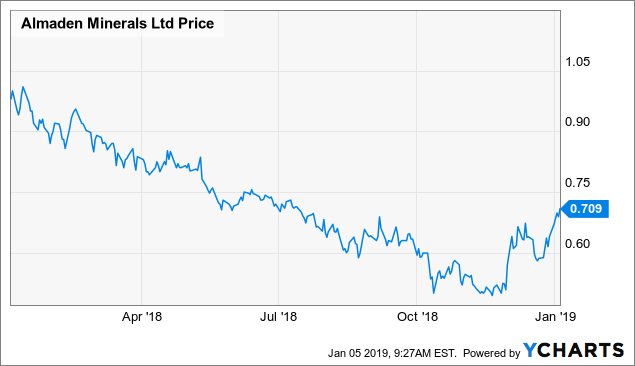Categories:
General Market Commentary
/
Precious Metals
Topics:
General Market Commentary
/
General Precious Metals
Almaden Minerals A Step Closer To Gold And Silver Production
Summary
- The Ixtaca project feasibility study is very positive, despite notably higher initial CAPEX.
- Some of the changes included in the feasibility study should help to decrease the project footprint and water consumption which should help during the permitting process.
- Despite higher CAPEX, the after-tax NPV and IRR remain almost unchanged compared to the PFS, due to the higher feed grades.
- Permitting and potentially high share dilution remain the main worries for Almaden's investors.
In December, Almaden Minerals (AAU) released results of the feasibility study for its Mexican Ixtaca gold-silver project. The project located in the state of Puebla has a lot of potential; however, it has also to face some opposition. The recently completed feasibility study has incorporated several significant changes that led to a higher initial CAPEX but also to lower environmental risks which should help with the permitting process. The market reaction was positive and Alamaden's shares are approximately 20% up, since the release of the feasibility study results.
 AAU data by YCharts
AAU data by YChartsAccording to the feasibility study, the deposit contains 73.1 million tonnes of ore reserves grading 0.59 g/t gold and 36.3 g/t silver. The volume of contained metals is 1.387 million toz gold and 85.159 million toz silver (2.5 million toz of gold equivalent or 189.2 million toz of silver equivalent). The volume of gold reserves increased by 7.35% and volume of silver increased by 8%. The measured, indicated and inferred resources (including reserves) contain 2.419 million toz gold and 131.330 million toz silver, which mean that there is potential to increase the volume of reserves in the future. Moreover, there is the newly discovered Tano zone and several exploration targets that may turn out to be very important for the later years of operations. The feasibility study envisions mine feed grade of 2.03 g/t of gold equivalent on average over the first six years of operations, but only 0.67 g/t of gold equivalent on average over the last five years of operations. Any additional ore grading more than 0.67 g/t of gold equivalent may improve the economics of the mine significantly over the later years.
Ore should be extracted using the open-pit mining method. The initial mine life is estimated at 11 years. During this time, the production should average 90,000 toz gold and 6.16 million toz silver per year. It equals to 173,000 toz of gold equivalent. The production costs should be relatively low, only $850/toz of gold equivalent. Over the first six years, the average annual production should equal 108,000 toz gold and 7.071 million toz silver (202,000 toz of gold equivalent), at an AISC of $810/toz of gold equivalent. The project should be developed in two stages. The initial stage should have a throughput capacity of 7,650 tpd and the initial CAPEX to build it is estimated at $174 million. In year four, the throughput should be expanded to 15,300 tpd. The expansion cost of $64.5 million (included in the sustaining CAPEX) should be funded from cash flows generated by the first stage operation.
At a gold price of $1,275/toz and silver price of $17/toz, the after-tax NPV (5%) is $310 million and the after-tax IRR is 42%. The numbers are very similar to the PFS that projected after-tax NPV (5%) of $310 million and after-tax IRR of 41%, but at a gold price of $1,250/toz and silver price of $18/toz. The economics remain almost unchanged despite the initial CAPEX growing from $117 million to $174 million or by 48.7%. This was possible mainly due to the inclusion of ore sorting into the mining process that helped to improve the feed grades notably (from 0.62 g/t gold and 37.7 g/t silver to 0.77 g/t gold and 47.9 g/t silver).
It is also important to note that the project offers notable leverage to gold and silver prices. At a gold price of $1,350/toz (5.88% higher) and a silver price of $18.5/toz (8.8% higher), the after-tax NPV (5%) equals $388 million (25% higher) and the after-tax IRR equals 49% (16.7% higher).